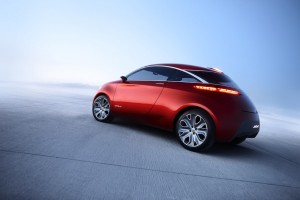
The most recent Beijing Auto Show saw plenty of new products debuting, including the Ford Start concept, but is the market starting to slow?
Is the over-heated Chinese car market finally showing signs of cooling down? And if so, will the Beijing government yet again intervene to keep the momentum building?
Now the world’s largest national automotive market, China’s car sales have been growing at a torrid pace, volume during the first quarter of 2010 rising at an annual rate of 72%. But while April sales were yet again up 34% compared to year-earlier numbers, they actually fell 12% when compared to March 2009.
“China’s automotive market remains volatile,” suggests a new report from J.D. Power and Associates.
And even the strong first quarter, it notes, may contain some potentially troubling signs once the numbers are parsed more closely. Much of the growth, especially in March, appears to simply be the result of dealers rebuilding inventories after 2009.
Last year’s strong demand for cars was driven, to a significant degree, by government sales incentives, Beijing struggling to make sure that the country didn’t get slammed by the same economic woes that crippled much of the rest of the world.
But now, the government is pulling back on subsidies and, if anything, notes the Power report, “conducting a series of tightening measures in the real estate sectors and bank lending.” The latter could be troubling to the auto industry since Chinese consumers have increasingly come to rely on loans, rather than personal savings, to buy new cars. Add other factors, such as the rapid decline of China’s stock market, in recent weeks, and, “All these factors are likely to compromise the consumer confidence, and vehicle sales are not likely to be spared.”
Last year’s “blowout” will be difficult to repeat, concurred the government-run Global Times newspaper. But many observers believe that if the pace of the car market cools off too rapidly, Beijing may still intervene in the country’s command economy, especially in the auto sector, Wei Chenggang, an auto analyst at Shanghai Securities, in Shanghai, told the Associated Press.
Even so, he added, “Sales growth will certainly slow down in the rest of this year.”
On the other hand, any belt-tightening could prove good for homegrown brands, such as Geely and BYD, analysts suggest, because their products are typically cheaper than comparable models sold by joint venture brands, such as Buick.
(Foreign makers, like General Motors or Volkswagen, are required to partner with a Chinese manufacturer, such as Shanghai Automotive Industry Consortium, or SAIC.)
Last month’s Beijing Motor Show was dominated by domestic makers, who were responsible for roughly 80% of the new models on display. But in a special China report, Power warns that the homegrown marques still suffer “wide gaps in vehicle quality and reliability” when compared to the global brands, and unless the domestic producers can catch up, they could lose ground as increasingly affluent Chinese consumers “transition from price-buyers to product-buyers,” looking for the best vehicle, not necessarily the least expensive.
Foreign ventures still dominate the sales charts, and General Motors’ various partnerships led the list, in April, with sales collectively rising 41%, to more than 211,000. It was GM’s 16th consecutive monthly record.
